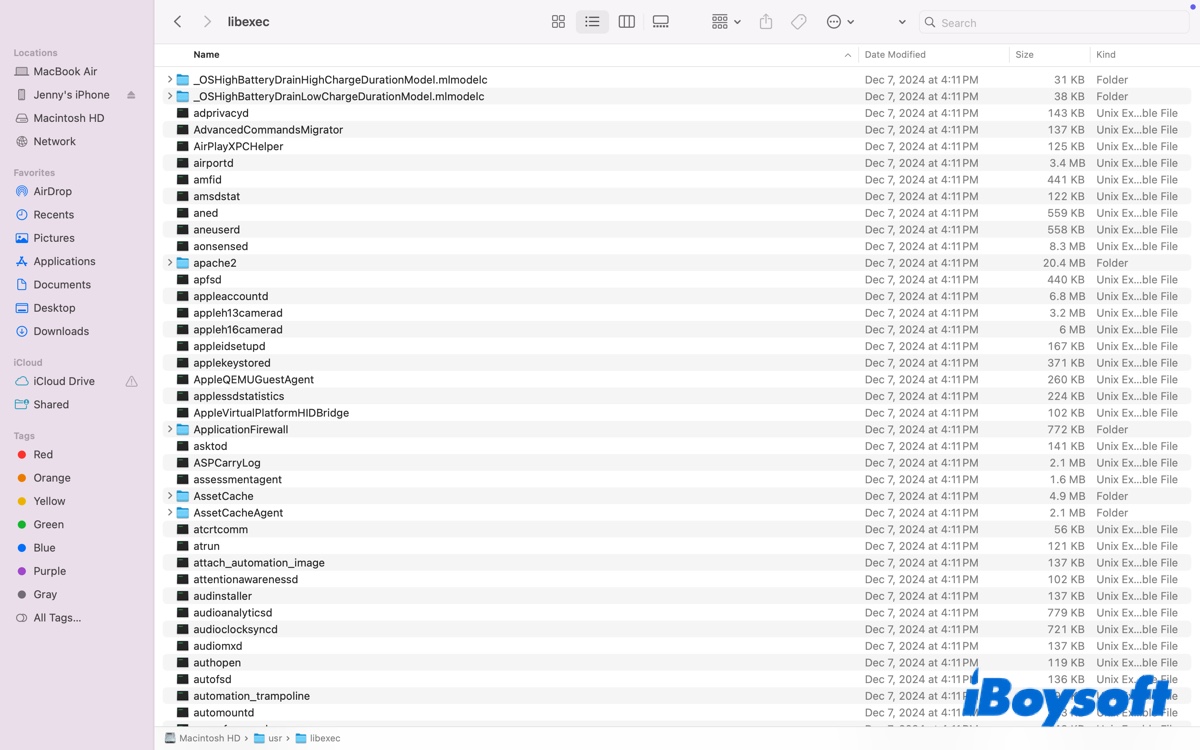If you've ever ventured into the depths of your Mac's file system, you may have stumbled upon a folder named libexec. To the uninitiated, its contents can seem cryptic.
This mystique is sometimes amplified when security software, like Norton or others, might flag it or the items within it as a "potential threat," causing unnecessary worry for users.
This article will demystify the libexec directory.
What is libexec on a Mac?
On a macOS system, libexec (short for library executables) is a standard directory designed to store specialized helper executables and daemons. These are not typical applications that a user would double-click to run. Instead, they are small, supporting programs and scripts that are launched by other, larger applications or by the operating system itself.
Think of it as a backstage area for a theater production. You, the user, see the main actors on stage (the applications in your /Applications folder). The libexec directory houses the stagehands, lighting technicians, and sound engineers—all the essential workers who operate behind the curtains to make the main performance seamless.
The primary libexec folder on your Mac is located at the root of your system volume at /usr/libexec.
What is the purpose of libexec?
The purpose of the libexec directory is rooted in software design best practices: organization, security, and cleanliness.
Modularity and Organization: Large applications often consist of multiple smaller components. By placing these helper utilities in the libexec folder, developers keep the main application bundle clean and focused. This separation of concerns makes software easier to maintain and update.
Security: These internal executables are not meant to be run directly by the user. Hiding them away in a system directory like /usr/libexec reduces the risk of a user accidentally executing them, which could potentially disrupt a system process. Furthermore, it helps prevent malicious software from easily finding and manipulating these low-level components.
Preventing Naming Conflicts: The /usr/bin directory contains commands accessible to all users. Placing every single helper tool there would create a cluttered and chaotic environment where different software packages might have executables with the same name. The libexec folder allows each application to have its own private space for its tools.
In short, the libexec directory is a dedicated and secure space for the crucial behind-the-scenes software that keeps macOS and your applications running smoothly.
What is in the /usr/libexec folder?
The contents of the /usr/libexec folder are a collection of hundreds of helper binaries, scripts, and daemons that are critical to macOS. You will find utilities for core system functions, network configuration, security, and more.

Common examples of what you might find in the /usr/libexec directory include:
- Apple-specific Daemons: Services like AirPlayXPCHelper (for AirPlay), apfsd (for the APFS file system), and cloudphotod (for iCloud Photos).
- Network Utilities: Helpers for managing Wi-Fi (airportd), network interfaces, and VPN connections.
- Security Services: Executables related to Keychain, authorization, and biometrics (Touch ID).
- Application Helpers: Many third-party software installers, like those for Docker or Homebrew, will also place their own support files in a subdirectory within /usr/libexec.
Important Note: While you can view the contents of this folder, you should never modify, delete, or move files from /usr/libexec unless you are explicitly instructed to do so by a trusted developer or knowledge base article. Tampering with these files can cause applications to break or, worse, render your macOS installation unstable.
FAQs about libexec on Mac
- QIs the libexec folder safe? Can I delete it?
-
A
Yes, the libexec folder itself and its contents are perfectly safe—they are official parts of macOS and your installed applications. You shouldn't and won't be able to delete the /usr/libexec folder or its contents, they are under the system's protection.
- QWhy did my antivirus software (Norton, etc.) flag a file in libexec as malware?
-
A
Anti-virus software uses heuristics and behavior analysis to detect threats. Sometimes, the behavior of a legitimate helper tool in the libexec directory (e.g., it runs in the background and modifies system settings) can resemble the behavior of a rootkit or Trojan horse, triggering a false positive.
Before panicking, check the exact file name that was flagged. A quick web search for that specific filename can often confirm it's a legitimate Apple component. You can also upload the file to a service like VirusTotal to check it against multiple antivirus engines.
